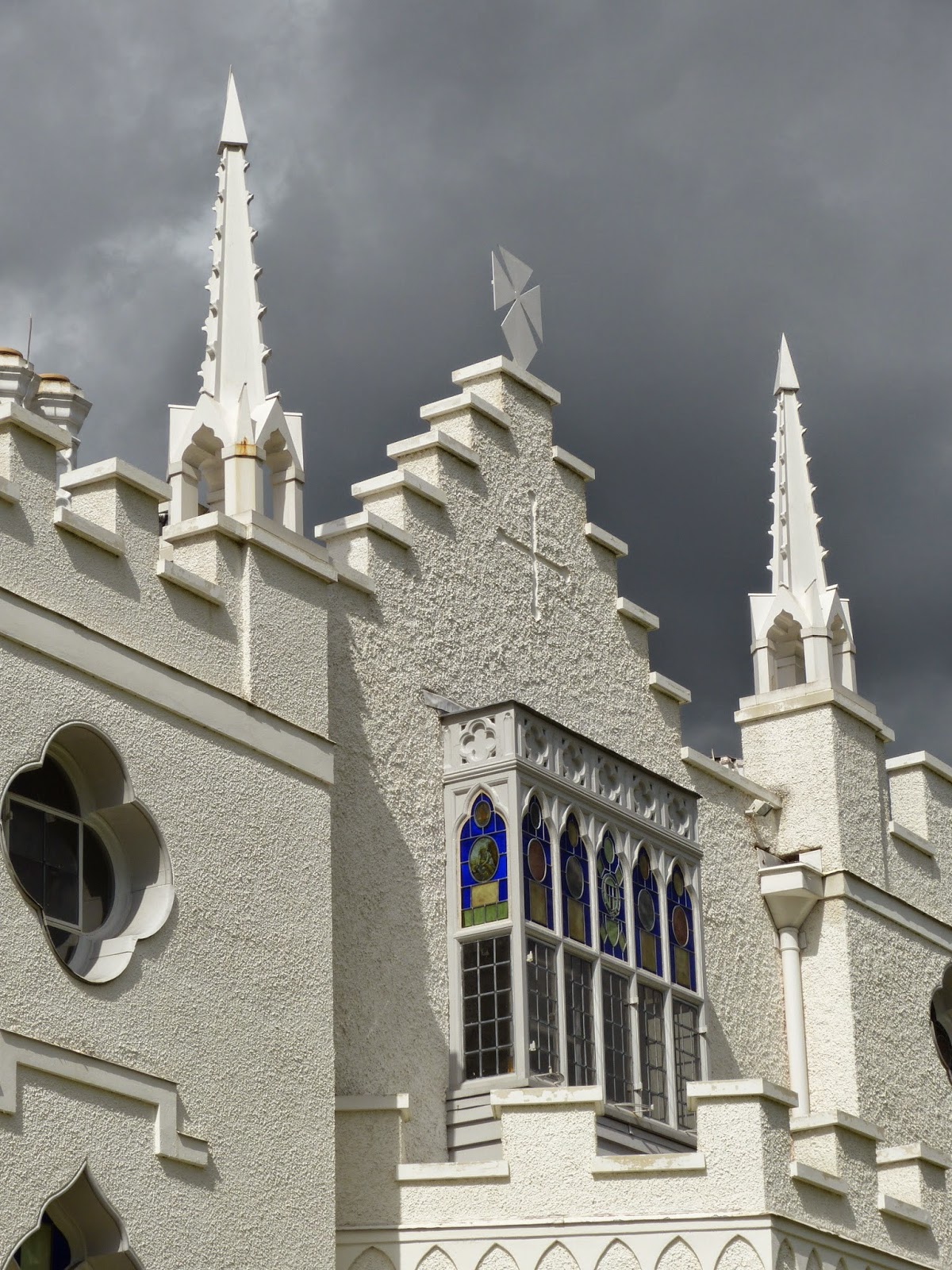Strawberry Hill - Horace Walpole's Gothic castle - a Regency History guide
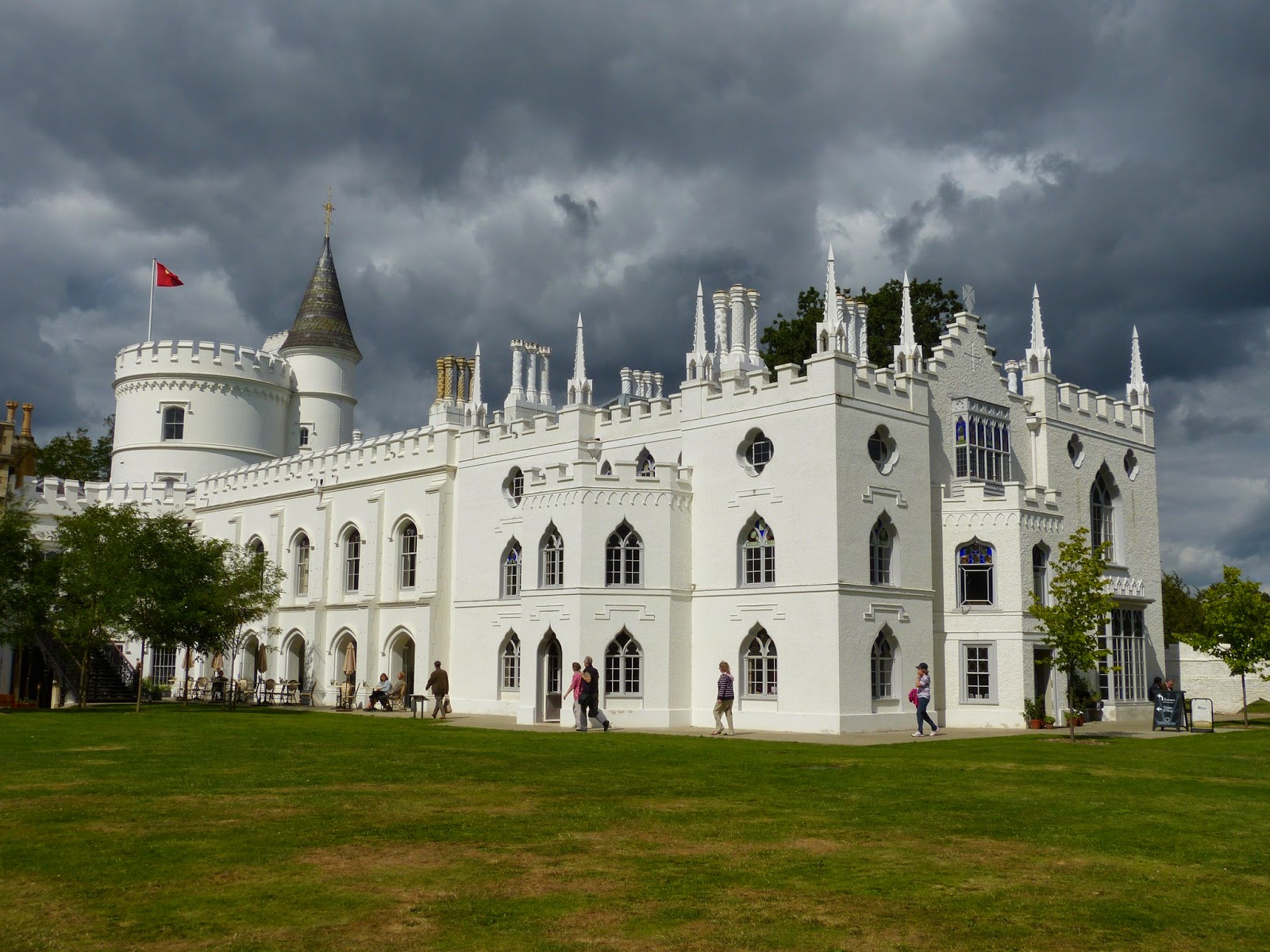 |
| Strawberry Hill (2014) |
Strawberry Hill is a Gothic castle in Twickenham in London created by Horace Walpole.
Horace Walpole (1717-1797)
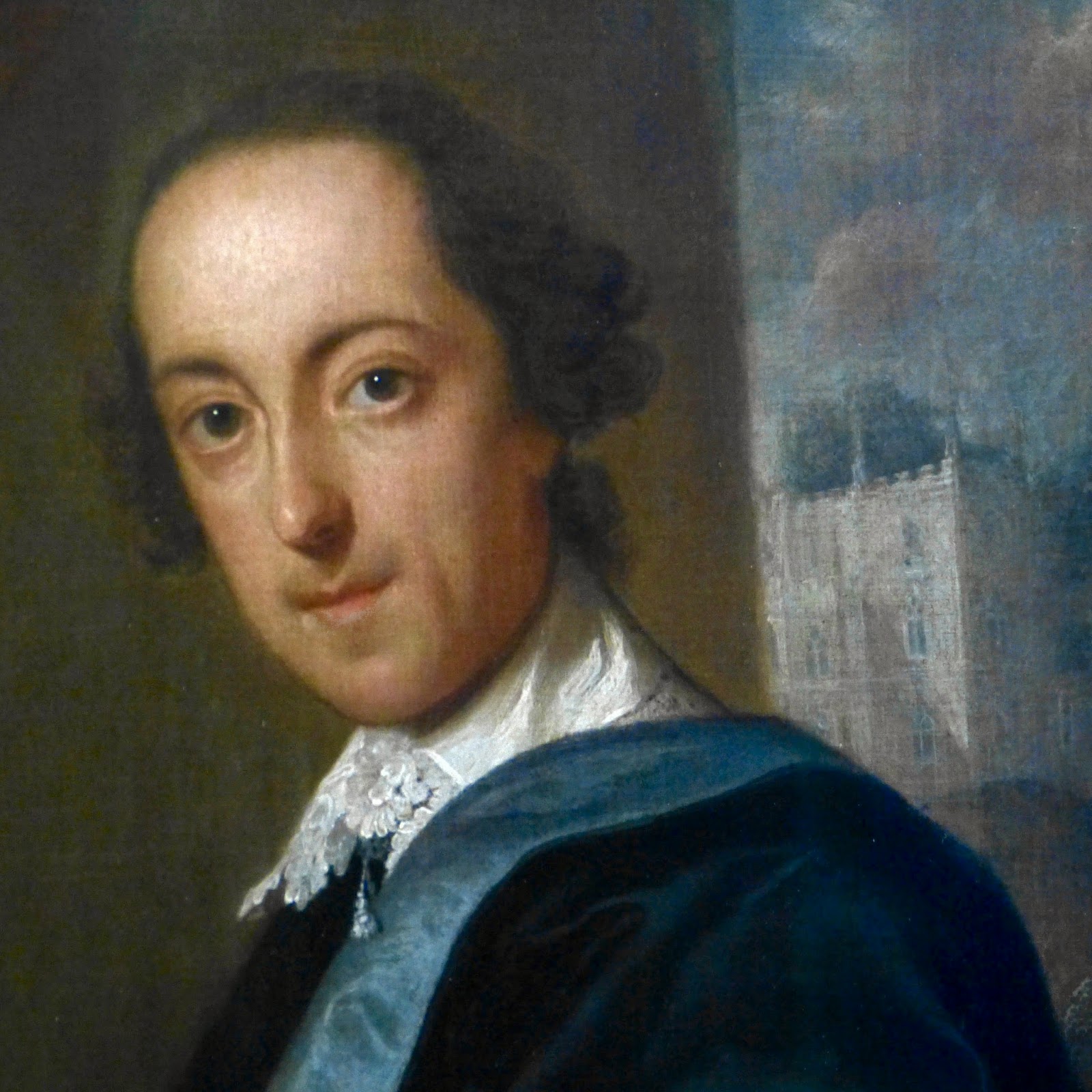 |
| Horace Walpole from a portrait by John Giles Eccardt (1747-8) |
Horatio Walpole, known as Horace, was the youngest son of Sir Robert Walpole, the first British Prime Minister. In 1741, after spending two years on the Grand Tour, Walpole became a Whig MP. He was a prolific letter writer and author of a Gothic novel, The Castle of Otranto (1764), as well as an antiquarian and collector. He became 4th Earl of Orford in 1791 on the death of his nephew.
The creation of Strawberry Hill
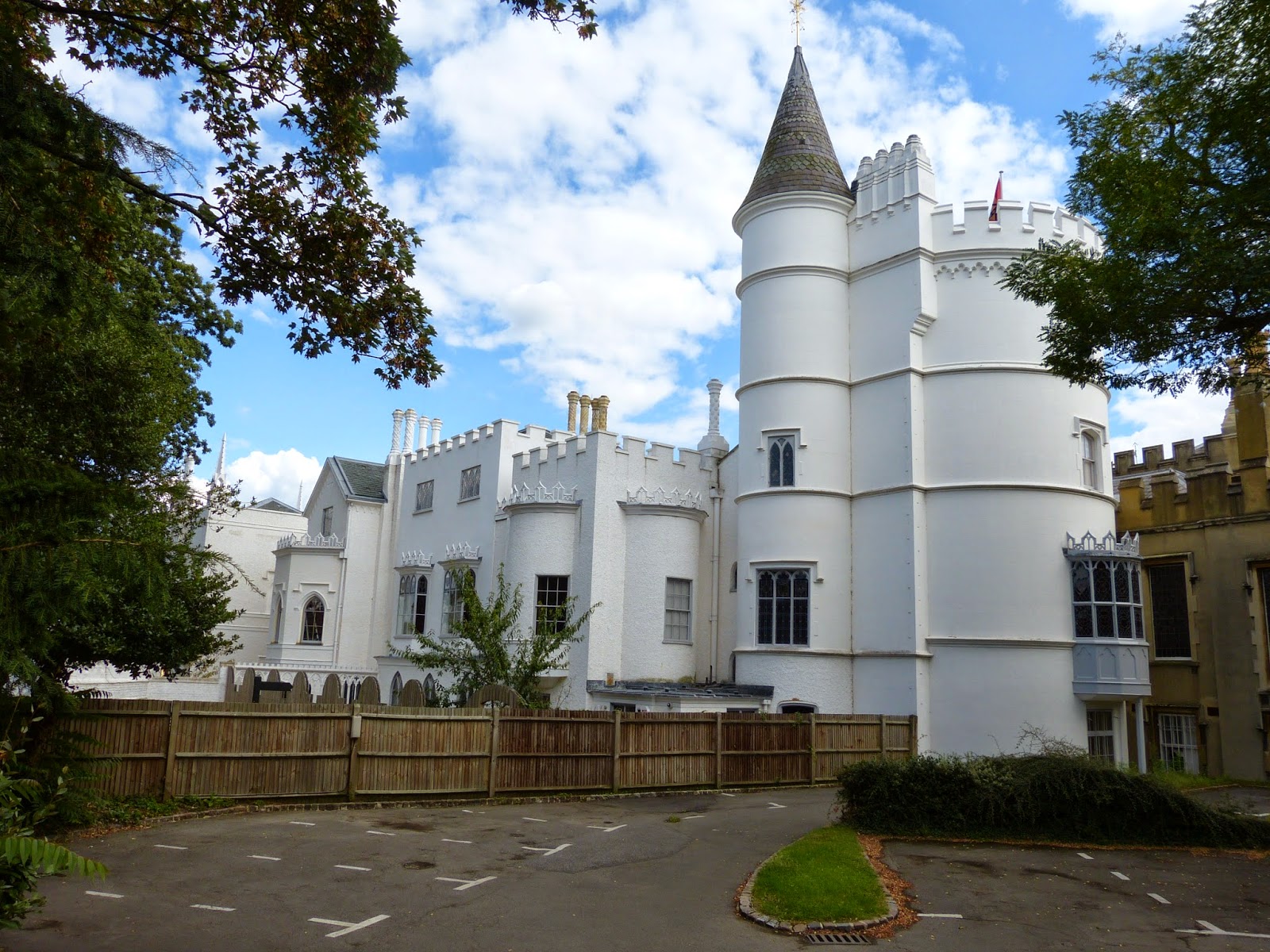 |
| Strawberry Hill |
In 1747, Horace Walpole took out a lease on a house in Twickenham, not far from the River Thames. Known locally as Chopped Straw Hall, Walpole renamed it Strawberry Hill after discovering a reference to the name in an old lease. He bought the property in 1749 and embarked on an ambitious building project to transform Strawberry Hill into a model of Gothic architecture.
The original property consisted of two buildings joined together. Walpole delighted in their lack of symmetry and used them as the core of his new house. With the help of a committee of friends including John Chute, an architect and the owner of The Vyne in Hampshire, and Richard Bentley, an illustrator, Walpole designed his fairytale castle.
He clad the outside of the original buildings and added battlements and pinnacles. Internally, he added chimney places and bookcases, stained glass windows and intricate ceiling and wall designs. His aim was to create a route through his house where the visitor was constantly surprised, with gloomy areas leading into bright open spaces.
The original property consisted of two buildings joined together. Walpole delighted in their lack of symmetry and used them as the core of his new house. With the help of a committee of friends including John Chute, an architect and the owner of The Vyne in Hampshire, and Richard Bentley, an illustrator, Walpole designed his fairytale castle.
He clad the outside of the original buildings and added battlements and pinnacles. Internally, he added chimney places and bookcases, stained glass windows and intricate ceiling and wall designs. His aim was to create a route through his house where the visitor was constantly surprised, with gloomy areas leading into bright open spaces.
Walpole created Strawberry Hill as his Gothic summer house and filled its rooms with his collections of art, books and antiquities. The aristocracy flocked to see his fairytale castle and its famous collections. Walpole showed round some visitors, but others were taken round by his housekeeper who expected a guinea from each person for the trouble.
Walpole wrote A Description of the Villa of Mr Horace Walpole at Strawberry-Hill near Twickenham, Middlesex, an illustrated guide to Strawberry Hill, and printed it on his own printing press. However, he seldom gave copies out as he feared that visitors would never leave if they sought to see everything in the book!
Walpole wrote A Description of the Villa of Mr Horace Walpole at Strawberry-Hill near Twickenham, Middlesex, an illustrated guide to Strawberry Hill, and printed it on his own printing press. However, he seldom gave copies out as he feared that visitors would never leave if they sought to see everything in the book!
 |
| Frontispiece to A Description of the Villa at Strawberry Hill |
In The Description he hoped that
...the prospect would recall the good humour of those who might be disposed to condemn the fantastic fabric, and to think it a very proper habitation of, as it is, the scene that inspired, the author of the Castle of Otranto.1By 1774, Walpole had introduced a ticketed system. Tours were only available from 1 May to 1 October and he only allowed a maximum of four visitors per day. Children were expressly prohibited.
On Walpole’s death in 1797, Strawberry Hill passed to his cousin, the sculptor Mrs Anne Seymour Damer, for life. She lived there until 1811 when she gave the house up because she found it too expensive to maintain.
The house then passed to Walpole’s great niece, Lady Elizabeth Waldegrave, widow of the 4th Earl Waldegrave. Lady Elizabeth was the eldest daughter of Maria, Countess Waldegrave, later Duchess of Gloucester, by her first marriage. Maria was the illegitimate daughter of Walpole's brother Edward.
Left to rot
Two generations later, Lady Elizabeth’s grandson, George, 7th Earl Waldegrave, was sent to prison for riotous behaviour, and he blamed the Twickenham justice system for convicting him. In 1842, he took his revenge on Twickenham by auctioning off all Walpole’s collections and leaving the house empty to decay.
A new lease of life
After George’s death, his widow, Frances, restored and lived at Strawberry Hill. In 1923, the property was bought to house what is now St Mary’s University College. In 2007, the College leased the property to the Strawberry Hill Trust and renovation work began. It reopened to the public in 2010.
The house then passed to Walpole’s great niece, Lady Elizabeth Waldegrave, widow of the 4th Earl Waldegrave. Lady Elizabeth was the eldest daughter of Maria, Countess Waldegrave, later Duchess of Gloucester, by her first marriage. Maria was the illegitimate daughter of Walpole's brother Edward.
Left to rot
Two generations later, Lady Elizabeth’s grandson, George, 7th Earl Waldegrave, was sent to prison for riotous behaviour, and he blamed the Twickenham justice system for convicting him. In 1842, he took his revenge on Twickenham by auctioning off all Walpole’s collections and leaving the house empty to decay.
A new lease of life
After George’s death, his widow, Frances, restored and lived at Strawberry Hill. In 1923, the property was bought to house what is now St Mary’s University College. In 2007, the College leased the property to the Strawberry Hill Trust and renovation work began. It reopened to the public in 2010.
What can you see today?
• The Gothic façade of Strawberry Hill, restored to its white magnificence.
 |
| Strawberry Hill (2014) |
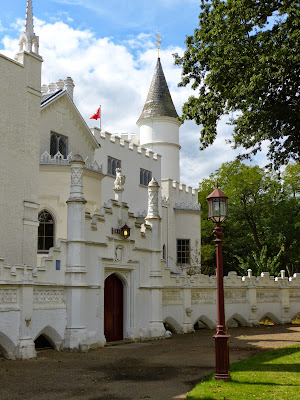 |
• The Entrance Hall – Described by Walpole as “the most particular and chief beauty of the Castle.”2 The staircase was inspired by the library staircase at Rouen Cathedral.
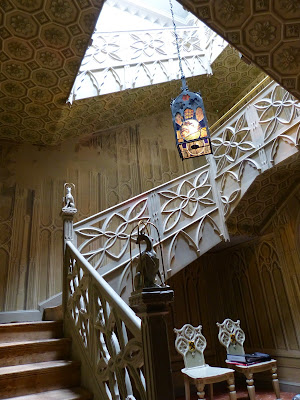 |
| Staircase, Entrance Hall, Strawberry Hill (2014) |
 |
| Detail from the staircase, in the Entrance Hall, Strawberry Hill (2014) |
 |
| The Great Parlour, Strawberry Hill (2014) |
 |
| Replica Gothic chairs, the Great Parlour, Strawberry Hill (2014) |
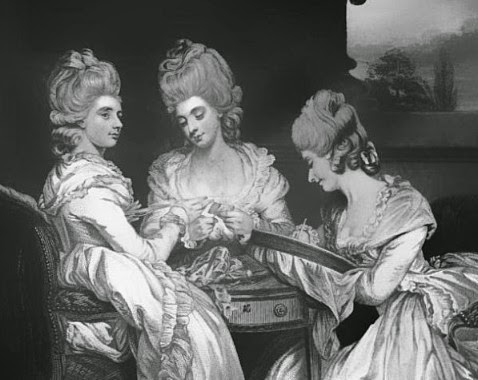 |
| Lady Maria Waldegrave, Laura Viscountess Chewton and Lady Horatia Waldegrave by Sir Joshua Reynolds (1780) from The Letters of Horace Walpole ed P Cunningham Vol 5 (1859) |
 |
| The Library, Strawberry Hill (2014) |
 |
| The Library, Strawberry Hill (2014) |
 |
| The Gallery, Strawberry Hill (2014) |
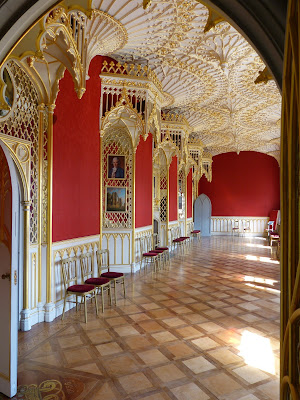 |
| The Gallery, Strawberry Hill (2014) |
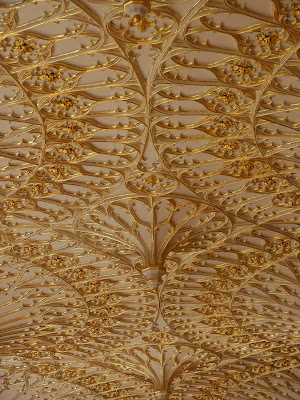 |
| The ceiling in The Gallery, Strawberry Hill (2014) |
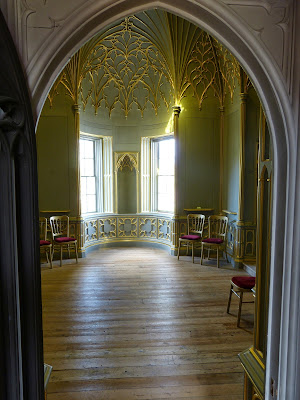 |
| The Tribune, Strawberry Hill (2014) |
 |
| The Robert Adam fireplace in the Round Drawing Room, Strawberry Hill (2014) |
 |
| Detail from the Robert Adam fireplace in the Round Drawing Room, Strawberry Hill (2014) |
 |
| The Chapel in the Woods (2014) |
Rachel Knowles writes clean/Christian Regency era romance and historical non-fiction. She has been sharing her research on this blog since 2011. Rachel lives in the beautiful Georgian seaside town of Weymouth, Dorset, on the south coast of England, with her husband, Andrew.
Find out more about Rachel's books and sign up for her newsletter here.If you have enjoyed this blog and want to encourage me and help me to keep making my research freely available, please buy me a virtual cup of coffee by clicking the button below.
Notes
(1) From the preface to A Description of the Villa of Mr Horace Walpole at Strawberry-Hill near Twickenham, Middlesex (1774).
(2) In a letter from Horace Walpole to Sir Horace Mann reported in The Gentleman's Magazine (April 1834).
Sources used include:
Iddon, John, Strawberry Hill and Horace Walpole, Essential Guide (2011, Strawberry Hill Trust)
Walpole, Horace, The Works of Horatio Walpole, Earl of Orford, in 5 volumes (1798)
All photographs © RegencyHistory.net
(1) From the preface to A Description of the Villa of Mr Horace Walpole at Strawberry-Hill near Twickenham, Middlesex (1774).
(2) In a letter from Horace Walpole to Sir Horace Mann reported in The Gentleman's Magazine (April 1834).
Sources used include:
Iddon, John, Strawberry Hill and Horace Walpole, Essential Guide (2011, Strawberry Hill Trust)
Walpole, Horace, The Works of Horatio Walpole, Earl of Orford, in 5 volumes (1798)
All photographs © RegencyHistory.net

